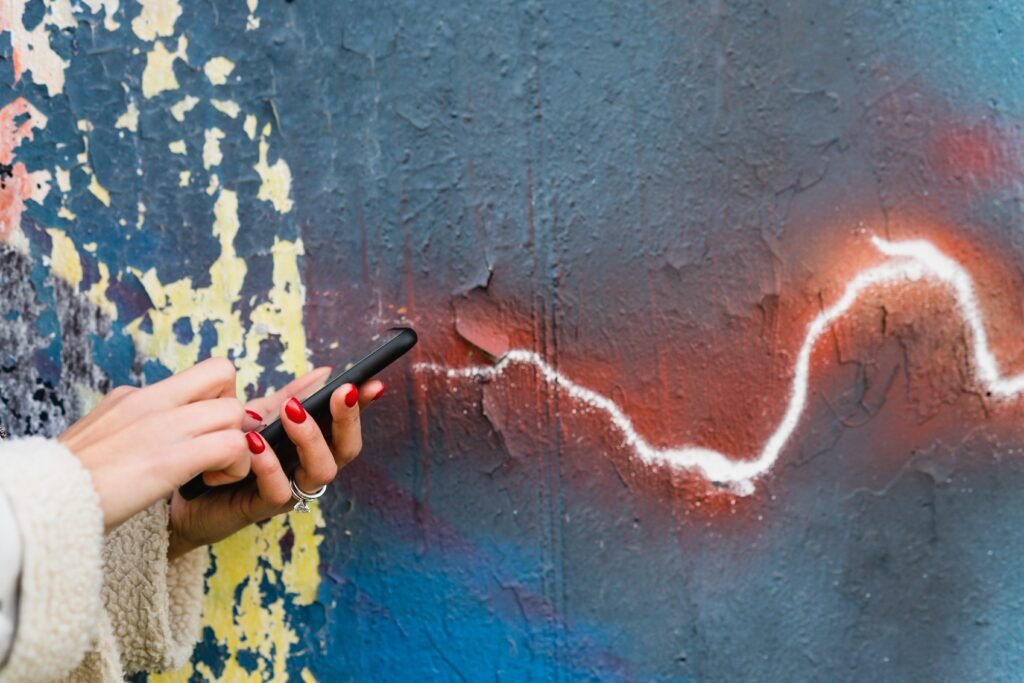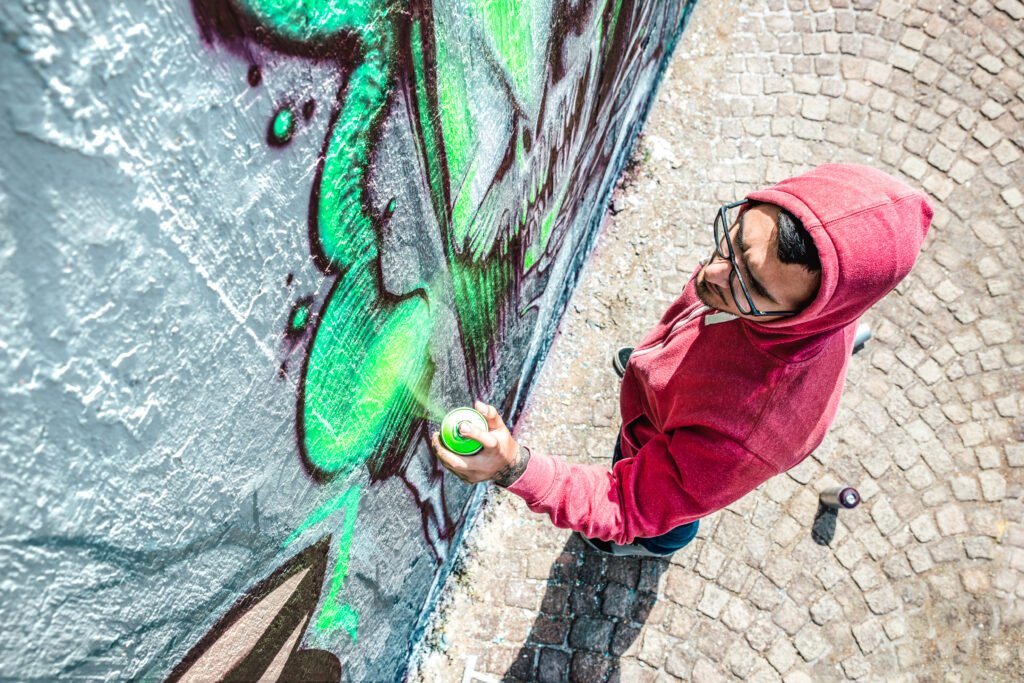Digital street art combines the tradition of urban art with the technological resources of the digital age, creating murals that go beyond the limits of physical space and expand into the virtual world. Often accessible through augmented reality or online platforms, these works offer new forms of interaction between artists and audiences.
By merging street art and technology, digital street art transforms walls into dynamic portals that connect the city to the internet. This new visual language expands the reach of the artistic message and reinforces the cultural presence of urban art in the age of global communication.
Origins and Transformation
Traditional street art has always been defined by its direct intervention in urban spaces. With the advancement of technology, artists began exploring the possibility of creating works that, in addition to being visible in the physical world, also come to life in the digital realm.
According to the book Street Art and the Digital City by Insa Matthews, published in 2014, the use of digital resources in urban art emerged as a response to the need to preserve ephemeral works and expand their visibility. Augmented reality apps allow murals to transform into animations or interactive experiences when viewed through a mobile device. In this way, the work gains narrative layers and elements that would be impossible in physical space.
Digital street art also builds a bridge between different audiences. Those who encounter the work on the street can later explore it online, while people in other countries can experience it virtually. This breaks geographical barriers and expands the cultural influence of these creations.
The Relationship Between Digital Art and Public Space
Digital art applied to urban spaces challenges the notion of authorship and permanence. Unlike galleries and museums, where works are protected and preserved, urban art, even digital, remains subject to environmental and public interaction.
According to the book Digital Art by Christiane Paul, published in 2015, the fusion of urban art with technological resources redefines the role of the spectator, who shifts from being a passive observer to becoming part of the experience. By pointing a smartphone at a mural with augmented reality technology, the audience activates hidden layers of the work, revealing videos, sounds, or additional images.
This interaction transforms public space into an environment of constant discovery. It also allows digital street art to engage with cultural and social movements in real time.
Cultural Impact and the Future of Digital Street Art
Digital street art is not just an aesthetic innovation but also a tool of resistance and political expression. By taking messages into the online environment, it ensures that ideas and statements survive even when physical interventions are erased or replaced. This digital resilience strengthens the presence of urban art in public discourse.
The integration of street art and digital platforms also creates new opportunities for global collaborations.

As technology advances, we are likely to see an expansion of digital street art into even more immersive experiences, combining virtual reality, artificial intelligence, and real-time interactions. The urban space will no longer be just the physical support but will become an active component of hybrid narratives.
Digital street art redefines the experience of urban art. By uniting the concrete of the streets with the fluidity of the online environment, it creates living works that transcend physical and temporal boundaries. In this new scenario, every wall can be a portal to invisible worlds, every mural an expanding narrative, and every spectator an active participant in the story.
More than documenting the city, digital street art reinvents it, transforming public space into an infinite field of creation and connection.



